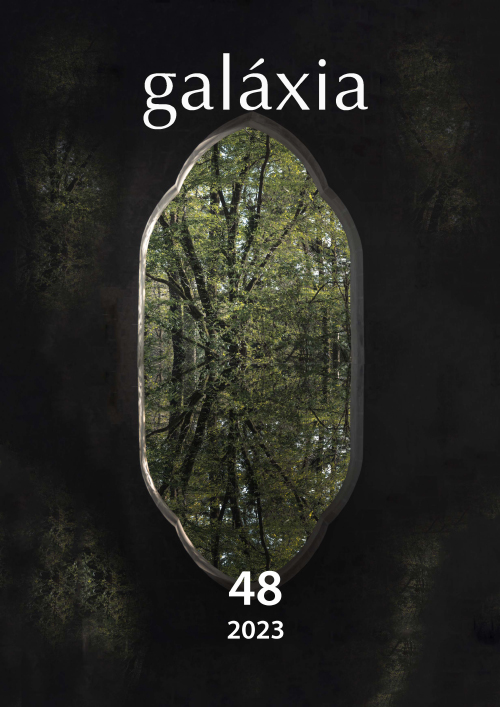A plasticidade dos folhetos de cordel:
do nomadismo das vozes à tessitura do imaginário nordestino em O Romance do Pavão Misterioso
Palabras clave:
literatura de cordel; imaginário; plasticidade cultural; pavão misteriosoResumen
As construções do imaginário do povo nordestino fazem parte do acervo cultural da região, tornando-se relevantes fontes de pesquisas. A literatura de cordel se apresenta como produção viva no contexto sociocultural em que se insere. Tecida por vozes da tradição oral, constitui-se arte popular que entrecruza realidade e ficção em narrativas que fazem emergir imagens e símbolos arquetípicos (JUNG, 2014), intrínsecos à criação mítica. Diante disso, este estudo investiga os processos de significação narrativa e a plasticidade cultural suscitados pelo cordel O Romance do Pavão Misterioso, obra do paraibano José Camelo de Melo Rezende (1885-1964). Por meio de uma pesquisa bibliográfica e documental, de natureza qualitativa, o estudo partiu das leituras de Rodrigues (2011) e Santos (2017) sobre a literatura de cordel, bem como dos estudos culturais e de tradição oral (ZUMTHOR, 1993), por meio de um viés simbólico-antropológico (DURAND, 2002; JUNG, 2014, 2016). Observando a sincronicidade e diacronicidade dessa narrativa e o processo mitanalítico do imaginário cultural que a tece, compreende-se que a diegese impressa em seus versos dimana de uma estrutura mítico-simbólica que se deu como processo contínuo de atualização de um imaginário coletivo em contexto nordestino. Mediante o fenômeno da plasticidade cultural (RODRIGUES, 2011, 2017), o estudo constata a manutenção de vozes arquetípicas que a literatura de cordel atualiza e ressignifica no contexto de narrativas midiáticas contemporâneas.
Citas
ALBUQUERQUE JÚNIOR, D. M. A feira dos mitos: a fabricação do folclore e da cultura popular (nordeste 1920 –1950). São Paulo: Intermeios, 2013.
ASSARÉ, P. Cante lá que eu canto cá-Filosofia de um trovador nordestino. 2. ed. Petrópolis: Vozes, 1978.
AYALA, M. I. N. Riqueza de pobre. Literatura e sociedade, Revista de teoria literária e literatura comparada, Universidade de São Paulo, n.2, 1997, p.160.
BAKHTIN, M. Estética da criação verbal. São Paulo: Martins Fontes, 1997.
BATISTA, F. C. Literatura popular em verso: antologia. Rio de janeiro: Fundação Casa de Rui Barbosa, 1977.
BHABHA, H. K. O local da cultura. Trad. de Myrian Ávila, Eliane Lourenço de L. Reis e Gláucia Renate Gonçalves. Belo Horizonte: EDUFMG, 1998.
CAMPBELL, J. O herói de mil faces. São Paulo: Editora Cultrix/Pensamento, 2007.
DURAND. G. As estruturas antropológicas do imaginário: introdução à arquetipologia geral. 3. ed. São Paulo: Martins Fontes, 2002.
______. Campos do imaginário. Trad. Maria João Batalha Reis. Lisboa: Instituto Piaget, 1996.
ELIADE, M. Mito e realidade. Trad. Póla Civelli. São Paulo: perspectiva, 1972.
FERREIRA, J. P. O universo conceitual de Paul Zumthor no Brasil. Revista do Instituto de Estudos Brasileiros, n.45, 2007, p.141-152. Disponível em: https://doi.org/10.11606/issn.2316-901X.v0i45p141-152. Acesso em: 22 jul. 2022.
GIRARDET, R. Mitos e Mitologias Políticas. Trad. Maria Lucia Machado. São Paulo: Companhia das letras, 1987.
GRAMSCI, A. Quaderni di Cárcere. Roma: Instituto Gramsci, 1978.
JUNG, C. G. O homem e seus símbolos. Trad. Maria Lúcia Pinho. 3. ed. Rio de Janeiro: HarperCollins, Brasil, 2016, p. 15-130.
______. Os arquétipos e o inconsciente coletivo. 11. ed. Petrópolis: Editora Vozes, 2014.
KARLOS-GOMES, G. O imaginário no cordel “Antonio Conselheiro: o profeta do Sertão”. In: Tessitura do cordel brasileiro: múltiplos olhares. Org: KARLOS-GOMES, G.; BRANDÃO, M.A.V; ARAÚJO, P.M; SANTOS, S.P. João Pessoa: Ideia, 2021, p. 209.
MAXADO, F. Literatura de Cordel. São Paulo: Hedra, 2007, p. 32.
RESENDE, J. C. M. O Romance do Pavão Misterioso. Fortaleza: ABC-Academia Brasileira de Cordel; Tupinanquim Editora, 2011.
AUTOR. 2011.
______. 2013.
______. 2014.
______. 2017.
______. 2018.
______. 2021.
SANTOS, G. M. Dos versos às cenas: o cangaço no folheto de cordel e no cinema. Campina Grande: Editora Marcone, 2014.
______. Eco das vozes. In: Cantorias, cordel e cinema: vozes do imaginário musical do cangaço. Org. Gilvan de Melo Santos. Campina Grande: EDUEPB, 2017, p.53-64.
SANTOS, R. A. Ao pé do fogo... Conversas sobre oralidades. In: TIERNO, Giuliano (Org.). A Arte de Contar Histórias: Abordagens poética, literária e performática. São Paulo: Ícone Editora, 2010. Cap. 8, p. 107-125.
AUTORES. 2022.
ZUMTHOR, P. A letra e a voz. Trad. Amálio Pinheiro e Jerusa Pires Ferreira. São Paulo: Companhia das Letras, 1993.
______. Introdução à poesia oral. Trad. de Jerusa Pires Ferreira, Maria Lúcia Pochat, Maria Inês Almeida. São Paulo: Editora Hucitec, 1997.
______. Performance, recepção e leitura. Trad. Jerusa Pires Ferreira e Suely Fenerich. São Paulo: EDUC, 2000.
______. Escritura e nomadismo. Trad. de Jerusa Pires Ferreira, Sonia Queiroz. Cotia, SP: Ateliê Editorial, 2005.
Descargas
Publicado
Cómo citar
Número
Sección
Licencia
Derechos de autor 2023 Galáxia. Revista do Programa de Pós-Graduação em Comunicação e Semiótica

Esta obra está bajo una licencia internacional Creative Commons Atribución 4.0.
Cedo a la revista Galaxia los derechos de autor para la publicación de mi artículo y consultaré al editor científico de la revista caso quiera republicarlo más adelante en un libro.



 Este obra está licenciada com uma Licença
Este obra está licenciada com uma Licença 